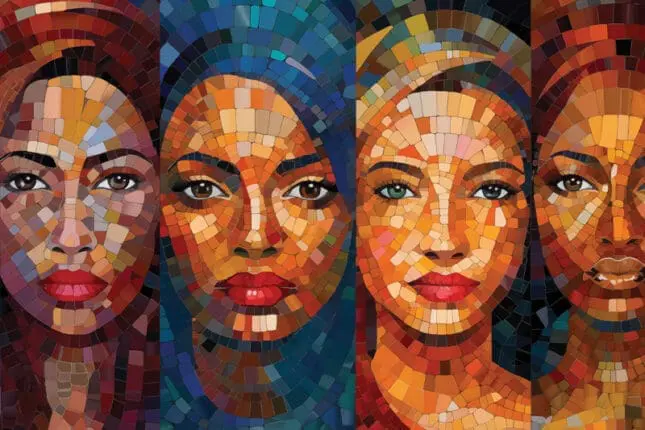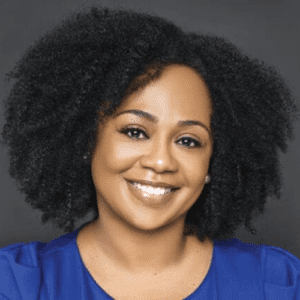From the book Sisterhood Heals: The Transformative Power of Healing in Community
My grandparents’ home sits at what I would describe as the apex of the little town of Napoleonville, Louisiana. It’s directly across the street from a Baptist church, up the street from the elementary school, around the corner from the house where you could buy the best homemade pies, and on the route to the only grocery store there was in town until it closed after Hurricane Katrina.
In short, it’s a great place to have a front row seat to all the action, and the best seats were always on the front porch, where the women in my family “held court.”
As the ear-hustling kindergartner I was, the porch was where I wanted to be. It’s where my Tee Jane would talk about whose kids were acting up at school and my Tee Cynt would talk about the latest employment drama at Bill’s Dollar Store. It’s where my Tee Ivy would get caught up on all the latest town gossip since she now lived in Texas and was usually only home for the summer and Christmas. Tee Lisa would take a sip of Dr Pepper—mostly for dramatic effect—before filling us, I mean them, in on what she’d heard while getting her hair done.
Though I didn’t always understand what they were talking about, I knew that this dynamic, this back-and-forth way of being, of engaging, was everything. It was where I first learned the healing power of sisterhood. It’s also the first place I learned how to navigate conflict. It was the sharing between these women in my life that provided a foundation for what I understood sisterhood to be.
Over the course of our lives, we build the foundations of our connections on inherited ideas about what it means to be in relationship with one another, how to deal with differences between ourselves and others, and who is deemed worthy of such connection. Those earliest ideas about connection, community, and sisterhood as well as how we attach ourselves to one another are often formed in our youth. They evolve from our very first relationships, with our parents or caregivers, siblings, and family members.
Some of the most formidable conversations I have with my clients stem from the information they share about their early relationships. I often spend time asking them questions and listening to their responses: Who was your biggest supporter growing up? How would you describe your relationship with your parents? How would you describe your relationships with your siblings? What did your friendships look like as a child? What I’m listening for are patterns in relationship dynamics from childhood that might be impacting current relationships. For example, a response like “I made friends pretty easily but none of the friendships seemed to last” would likely prompt a conversation about what support looks like today and whether longevity in friendships continues to be difficult. By no means does our childhood write our future in stone, but it can provide some helpful clues.
Because of the salience of women’s friendships in our lives, it’s important for me to assess this as part of my work. Forming strong connections with others—physical, mental, and emotional bonds that can withstand time and change—is not only integral to our development as humans, it’s connected to our very survival. For Black women, this is especially true. It is why I believe that the best way for Black women to thrive is through our healthy relationships with other Black women. As Nikki Giovanni once said, “Black women are…the only group that derives its identity from itself. I think it’s been rather unconscious, but we measure ourselves by ourselves, and I think that’s a practice we can ill afford to lose.” Yes ma’am, Ms. Giovanni. I couldn’t agree more. I measured so much of myself by those women I loved on the porch. But I’m also clear that maintaining flourishing relationships as an adult is not always so easy. The hurdles tend to have deeper roots.

As children, we’re often taught which girls are worthy of friendship and which women might stain our own image; these are all preconceived notions based not on fact, but, dare I say, more on fear. As for me, and maybe you too, I was taught to steer clear of the “fast girl” growing up. What this warning actually did was put a certain type of woman on a pedestal of acceptance, and, over time, these same inherited beliefs about worth kept us from making connections with sisters who could have helped us to grow and served as lifelines.
Receiving these warning messages seems to be a very distinct experience for Black women, as opposed to other groups. Professors of social work Geoffrey L. Greif and Tanya L. Sharpe write about their 2010 study of these relationships in “The Friendships of Women: Are There Differences Between African Americans and Whites?”: “Another difference among the two groups is that the African American women were much more likely to say they heard cautionary tales about female friends from their mothers. Roughly one-third received advice about not lending money to friends, not letting too many women into the home, and not keeping friends too close (a reference to their trustworthiness)…None of the White women reported hearing cautionary tales from their mothers. Thus, we are left believing strongly that [Black] women are influenced by the direct and subliminal messages received from their mothers’ friendships.”
If you were a Black girl or woman who listened to hip-hop in the late ’90s and early aughts, you likely remember the strums of the plucky baseline of Juvenile’s “Back That Azz Up.” Those smooth violin strings in the background and then the whispered “Hah, hah” created an anticipation and excitement that got you poised to leap to the dance floor. (Maybe for you it’s “Flashlight” by Parliament or even Megan Thee Stallion’s “Body.”)
When the song came on while we were in college, my friend Nicole would lose her whole, entire mind. I loved watching her kill it on the dance floor at whatever party we were at, but that hadn’t always been the case. Before coming to college, I wasn’t much of a fan of Nicole’s, mostly for that exact reason. We’d first met a few years earlier after attending several camps together in my senior year of high school. She was friendly enough, but my Spidey-senses started to tingle when I would see the way she danced with the boys at our social events. At the Student Council Camp in Natchitoches, I’ll never forget watching her do these choreographed dances that felt way too “grown” for us high schoolers. There I was doing my cute little two-step in our uniform of matching white T-shirt and jean shorts, and Sis would be swinging her hair back and dropping her whole booty to the floor, making all the boys lose it of course. Back then, though, I didn’t watch in admiration or celebration as I would when we were in college. I spent most of my time judging her. Hard. In my mind, she was what my mother called a “fast girl,” and I avoided her like my life depended on it.
I don’t remember exactly how old I was when my mama first warned me about being “fast.” I think it was probably in middle school before a school dance. At the time, I didn’t really know what it meant but could surmise that it was something related to being too flirty with boys. The fear of being fast not only governed my behavior but also impacted my ideas about other girls and who they were. Nicole would ultimately become one of my closest friends during my first year at Xavier University. I would later find out that she had been a dancer for most of her life and that if what she did looked choregraphed, it probably was. When we became friends, I eventually told her how I felt about her that summer and she was surprised because, in her mind, she was just dancing. It’s something she still teases me about to this day.
Now what would have happened if I hadn’t let go of my preconceived notions of who Nicole was? I’ll tell you. I would have missed out on someone who I can count on no matter what. Someone I have called when the “ish” hit the fan and, without hesitation, she rode out to pick me up, no questions asked. She’s one of the only people I trust with my children. She takes care of them if my husband and I are away, and she’s listed as an emergency contact at their school. Our kids play soccer together and go to baseball games together. Ideally, they’ll grow up and consider one another important parts of their support system.
I share this story because in many ways it illustrates how the early messages we get about other sisters impact us years later. Many of us have experiences with our moms, aunties, grandmothers, or other women in our lives who have warned us to be wary of other women, that they are not to be trusted, that they are not safe, that they do not mean us well. If we’ve grown up with these ideas, then it stands to reason that as adults we may have trouble building sustaining connections with other Black women. But one of the true gifts of sisterhood is the ability to revise this script with and for one another.

If it’s true that we can pass trauma and dysfunction from generation to generation, can it not also be the case that we pass joy, resilience, and connection through the same mechanism? According to scholar Katrina Bell McDonald, author of Embracing Sisterhood, women’s roles in precolonial Africa focused primarily on mothering children and being mothers of the culture. In this vein, women were bound to one another in pushing forth these values, which to my mind feels like the basis of how Black culture is shared and passed on today, through the stories of Black women. McDonald goes on to say that the values of “the primacy of kinship and communalism; reverence for ancestors and elders; and respect for and practice of spirituality, the centrality of motherhood, and shared power between men and women and of gendered institutional practice where it is beneficial to the self-determination and agency of family and community” are what serve as the foundation for sisterhood as we know it today. These values and the ways that precolonial Black women operated within this system have provided us with a framework for what’s possible as we strive to forge a path forward in a postcolonial, postslavery world.
The creation of Black sisterhood as we know it is the result of our foremothers taking those ancestral values of communal engagement and, in the face of horrific trauma, reimagining them—allowing those values to transform into an undefinable yet deeply felt connection among us as sisters. What an amazing demonstration of resilience and interpersonal innovation! In perhaps one of the very first instances of what we now call Black girl magic, our foremothers practiced their alchemy, taking the ideals of our ancestry and turning them into a kind of relationship that could sustain and heal us.
From post-Reconstruction through the Harlem Renaissance to the civil rights and Black Arts movements to the digital age of the 21st century, Black women are often left to gather and forge bonds with one another as we navigate increased exposure in white spaces—whether traditionally as caregivers and cleaners in white homes, or later as the first Black student in an all-white school, or the first Black woman anything anywhere. Historically, and until the present day, sisterhood is a modern Black woman’s birthright. Sure, we all have a choice as to whether we will accept it. But one thing remains true: It is ours. We do not have to do anything but exist to be part of this powerful network of support.
***
From the book Sisterhood Heals: The Transformative Power of Healing in Community by Joy Harden Bradford, PhD. Copyright © 2023 by Dr. Joy Bradford. Published by Ballantine Books, an imprint of Random House, a division of Penguin Random House LLC.
Joy Harden Bradford
Joy Harden Bradford, PhD, is a licensed psychologist and host of the award-winning mental health podcast Therapy for Black Girls. Her work focuses on making mental health topics and support more relevant and accessible for Black women. Her work has been featured in Essence, Oprah Daily, The New York Times, HuffPost, Black Enterprise, and Women’s Health. Visit her website at hellodrjoy.com













